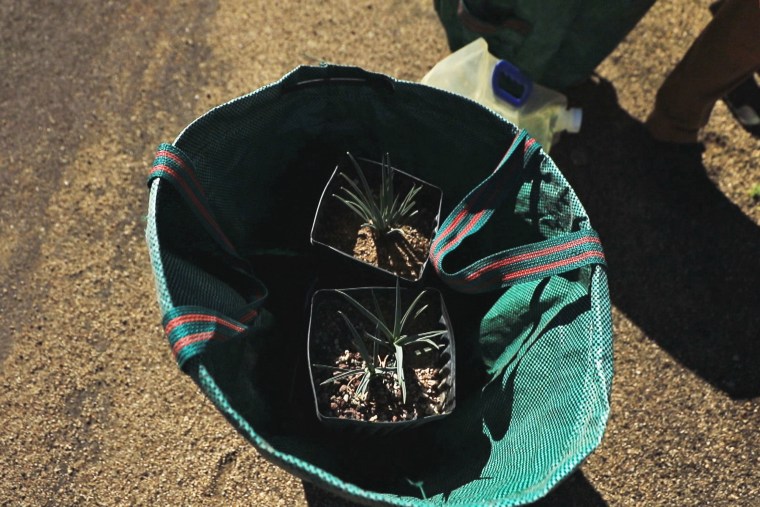THE MOJAVE DESERT, CALIF. — California’s Joshua trees look like something out of a Dr. Seuss book, resembling a cross between a cactus and a palm tree. The trees, part of the agave family and also sometimes called yucca palms, are hardy and adapted to the dry, rocky landscape of inland California.
Still, they can only handle so much. The desert Southwest is experiencing higher temperatures, more frequent drought and more intense fires because of climate change. The beloved plants — known for their majestic, spindly stature — are struggling to survive.
Fires were once infrequent in the Mojave Desert and smaller in size. The spread of nonnative grasses over the past several decades now allows flames to spread rapidly and wipe out huge numbers of Joshua trees, research shows.
Over the past three years, two massive fires — the 2020 Dome Fire and 2023 York Fire — ravaged the Mojave National Preserve, killing an estimated 2.5 million Joshua trees, according to Erin Knight, a field scientist helping to lead recovery efforts. An area that used to be one of the densest Joshua tree forests in the world is now filled with charred trees.
“It brought a tear to my eye when I was traveling, because it’s just, it’s such a loss,” said Bryce Pickett, a visitor and volunteer at the park. “There’s nothing really like them.”
Joshua trees are a keystone species, which means that many rare creatures could not make their homes in the desert without them. They allow rare beetles to burrow and often provide the only perch around for bird species like the great horned owl. Losing them threatens not only the ecosystem but also the character of the desert.
In a year when historic wildfires raged in the rainforests of Hawaii and subarctic Canada, the gnarled Joshua trees are a stark reminder that wildfires are now scrambling ecosystems in places where fire was once rare or could not burn as intensely.
In the Mojave preserve, the park service is now working on ways to restore these plants. The goal is to plant 4,000 trees over four years.

The focus of the effort is on restoring an area in the preserve called Cima Dome, where 1.3 million Joshua trees burned in 2020 in the Dome Fire. Scientists have determined Cima Dome is a climate refugia — a place that is buffered from climate change — where Joshua trees should be able to thrive.
“Most of these Joshua trees burned all the way to their crowns, and so once that happens, they can’t really come back,” Knight said. “And so, we are out here replanting with hopes to help naturally regenerate the area.”
Knight said other factors are adding to the challenge. Millenia ago, giant sloths used to spread Joshua tree seeds for miles. With those animals now extinct, the trees have to rely on smaller rodents and squirrels, which don’t travel as far.
The trees also grow at a slow pace, at most just 2 inches a year.
“We’re not going to see this in our lifetime be what it was before,” Knight said. “But we do what we can.”
As part of the restoration project, volunteers from across the country have been spending their weekends in the Mojave Desert helping plant trees.

Among the volunteers in mid-October was 10-year-old Ansel Joshua Bubb, from Wisconsin. His parents named him after the tree.
“We came hiking here when I was pregnant with Ansel,” his mom, Ally Bubb, said. “It was so awe inspiring.”
But restoring these trees is not easy. Only about 20% of those planted will survive.
“These trees really rely on a specific set of conditions, and as things get warmer, those conditions get placed into a smaller and smaller area,” said Ryan McRae, another field scientist helping with the restoration project.
But he believes even just one new tree can make a difference.
“My primary hope is that we have just some number of survivors within the burn scar that will help be sort of like a seed population to really accelerate the recovery of the Cima Dome,” he said.
These scientists and volunteers say they’re planting the seeds for future generations. It’s a labor of love in the fight to preserve these treasured trees.
“It’s a crisis, and you can see it firsthand here,” Ally Bubb said. “But maybe we’re a small part of fixing that.”